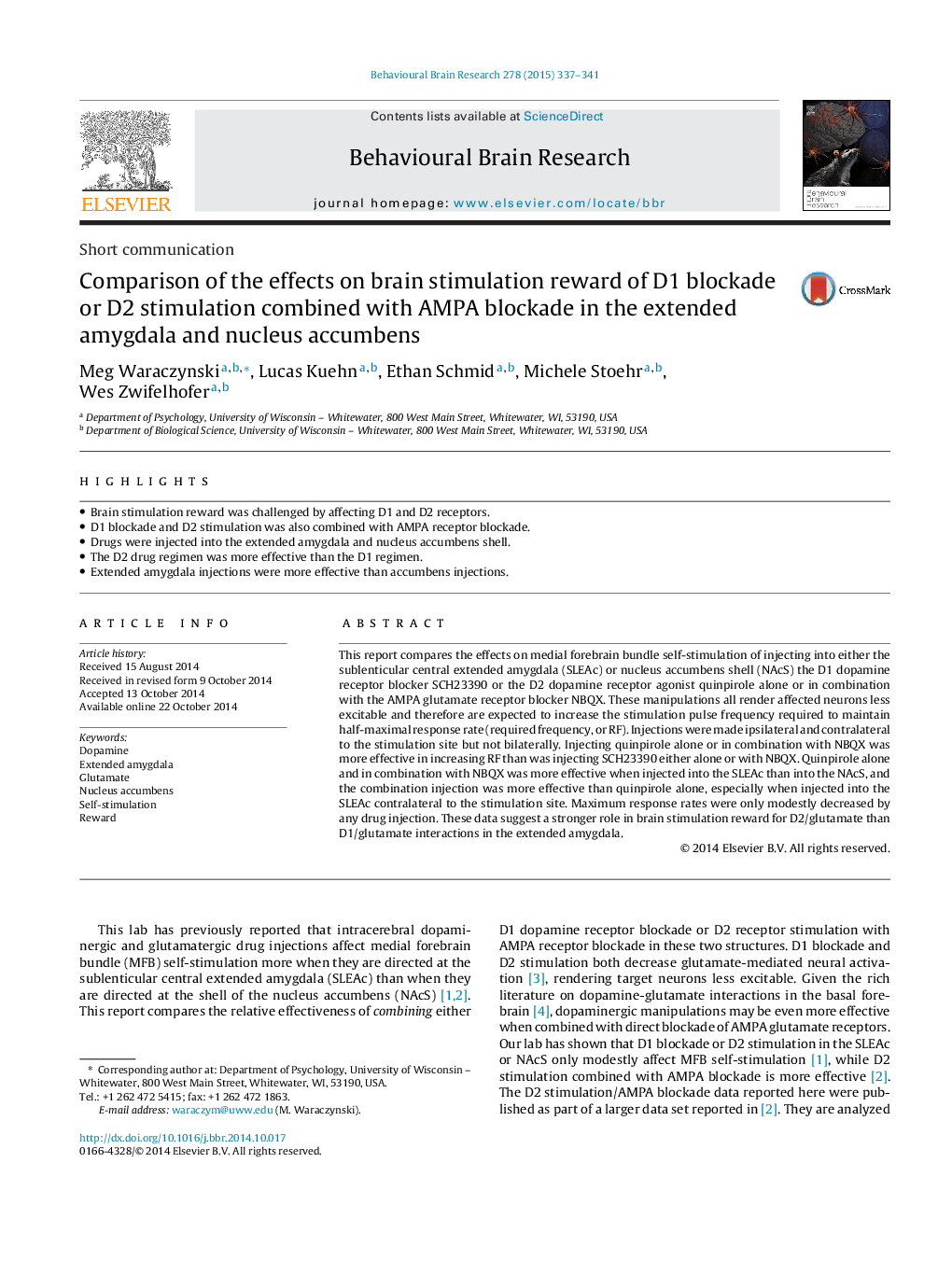| Article ID | Journal | Published Year | Pages | File Type |
|---|---|---|---|---|
| 6257687 | Behavioural Brain Research | 2015 | 5 Pages |
â¢Brain stimulation reward was challenged by affecting D1 and D2 receptors.â¢D1 blockade and D2 stimulation was also combined with AMPA receptor blockade.â¢Drugs were injected into the extended amygdala and nucleus accumbens shell.â¢The D2 drug regimen was more effective than the D1 regimen.â¢Extended amygdala injections were more effective than accumbens injections.
This report compares the effects on medial forebrain bundle self-stimulation of injecting into either the sublenticular central extended amygdala (SLEAc) or nucleus accumbens shell (NAcS) the D1 dopamine receptor blocker SCH23390 or the D2 dopamine receptor agonist quinpirole alone or in combination with the AMPA glutamate receptor blocker NBQX. These manipulations all render affected neurons less excitable and therefore are expected to increase the stimulation pulse frequency required to maintain half-maximal response rate (required frequency, or RF). Injections were made ipsilateral and contralateral to the stimulation site but not bilaterally. Injecting quinpirole alone or in combination with NBQX was more effective in increasing RF than was injecting SCH23390 either alone or with NBQX. Quinpirole alone and in combination with NBQX was more effective when injected into the SLEAc than into the NAcS, and the combination injection was more effective than quinpirole alone, especially when injected into the SLEAc contralateral to the stimulation site. Maximum response rates were only modestly decreased by any drug injection. These data suggest a stronger role in brain stimulation reward for D2/glutamate than D1/glutamate interactions in the extended amygdala.
